Saracen is back in a big way and its major focus for the moment is the brand new Ariel line. Redesigned from the ground up, while still retaining the multi-link suspension that first appeared on the downhill Myst, the Ariel comes in many forms and travels. The bike we have here is the base model, ‘shorted’ travel Ariel 30, and it’s been given a right good pasting.
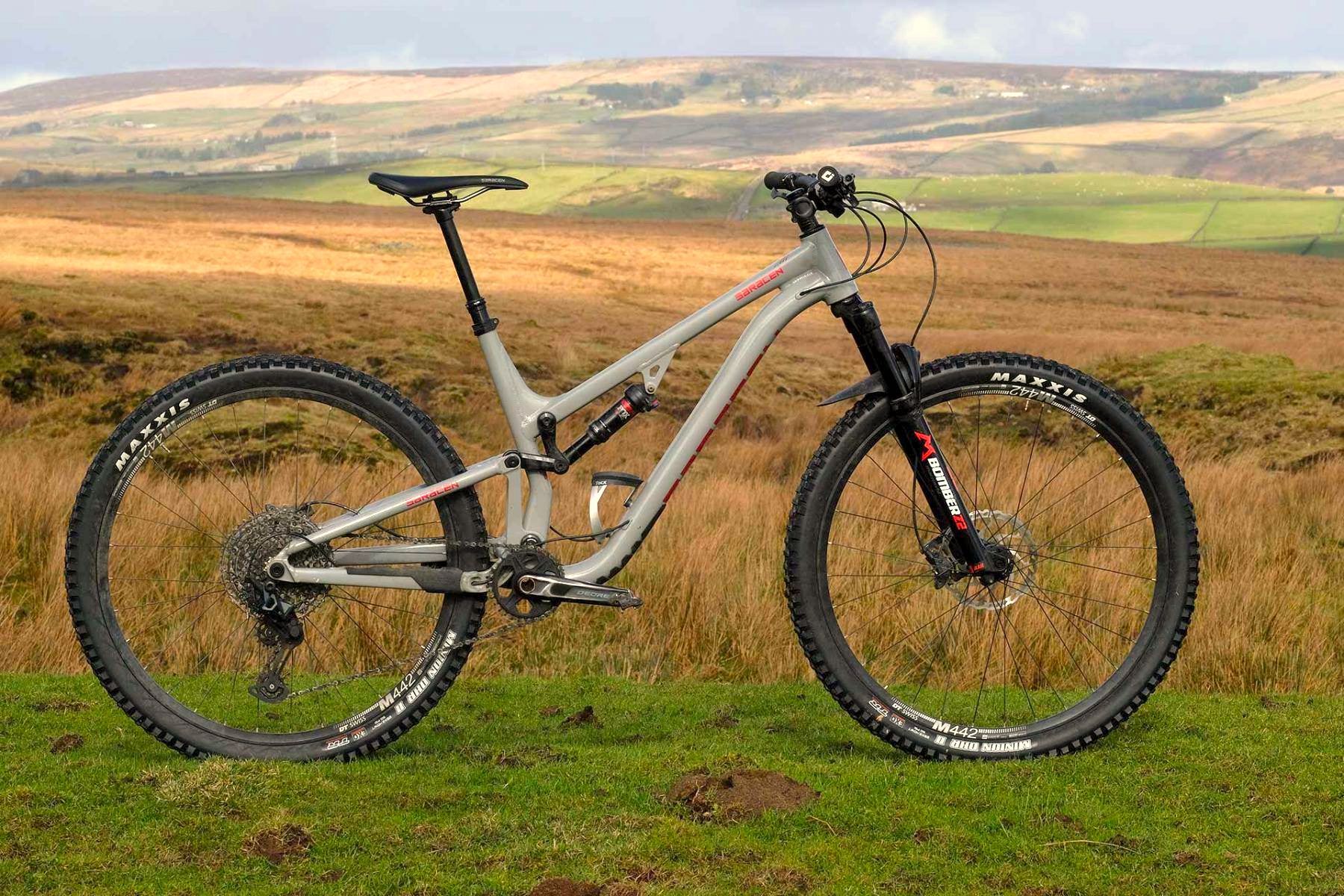
I’ve been lucky enough to have had this new Saracen Ariel 30 on test since the very beginning of December, well before they were announced and, without any other test bikes to distract me, it’s been my only mountain bike for the last three months, taking me through the wet and cold of December, the January freeze and now the hope of springtime.
Let’s dive in and see how it did.
Saracen Ariel 30 frame and components
Due to getting hold of a pre-launch bike, I had no say over which model I got, and it was going to be a large, whatever. Normally bike companies will send out their top-end bikes for magazine tests, just so that the swish components and lighter weight wheels will flatter what is often the same frame throughout the range. Here, though, I got the 130mm travel Saracen Ariel 30, the base model of the shorted travel version. Saracen was obviously confident in this new machine. It’s certainly been in development for a while. I joined Saracen-sponsored, world cup champion Matt Walker on a ride on an unpainted Ariel ‘mule’ nearly two years ago. Since then, pandemics and supply issues have meant that the Saracen brand has been quiet for a while, but now – with a change to a ‘direct to consumer’ sales model, the brand is back and keen to spread the word about its bikes.
The Saracen Ariel platform is a simple, single pivot design, with a linkage driven rear shock. While there have previously been carbon Ariels, the range is now conspicuously aluminium throughout. There are 130, 160 and 180mm versions of the Ariel, plus an inbetweeny 150mm Ariel e-bike.

Talking of inbetween, the Small and Medium Ariel bikes are equipped with ‘mullet’ wheels, with a 29in wheel front and a 27.5in wheel rear. For the Large and XL frames, though, the bikes come as full 29ers. However, there is a set of linkages in the box if you fancied putting a 27.5in rear wheel in on the bigger sizes (and there are 29er links in with the mullet bikes). You might struggle to fit that spare old 27.5in or 29er wheel in, though, as the Ariel is 157mm Superboost at the rear dropouts.
The frame sizing is pretty interesting. At 175cm/5ft 9in, I regularly sit in on the medium/large cusp and can ride either, if I can get the seatpost to work, so I was happy to try the Large. As well as giving me 29er wheels front and rear, it also came with a frankly massive 505mm reach (on a 625mm top tube). While this was probably 50mm longer than most bikes I normally ride, it was reasonably easy to get used to and the 150mm KS Rage dropper wasn’t quite bottomed on the seat clamp. Had I had a freer choice, I’d have downsized (and probably still would) but I can’t fault Saracen for looking at the longer end of where the reach game has gone and going for it. While it’s not quite to the extremes of the Geometron, the large and XL frames are certainly pretty contemporary in angles. The choice of reasonably slim 760mm RaceFace Aeffect handlebars seems odds with the 35mm stem diameter, and the 50mm length seems ‘long’ for such a reachy bike, so read those numbers charts carefully before you choose.
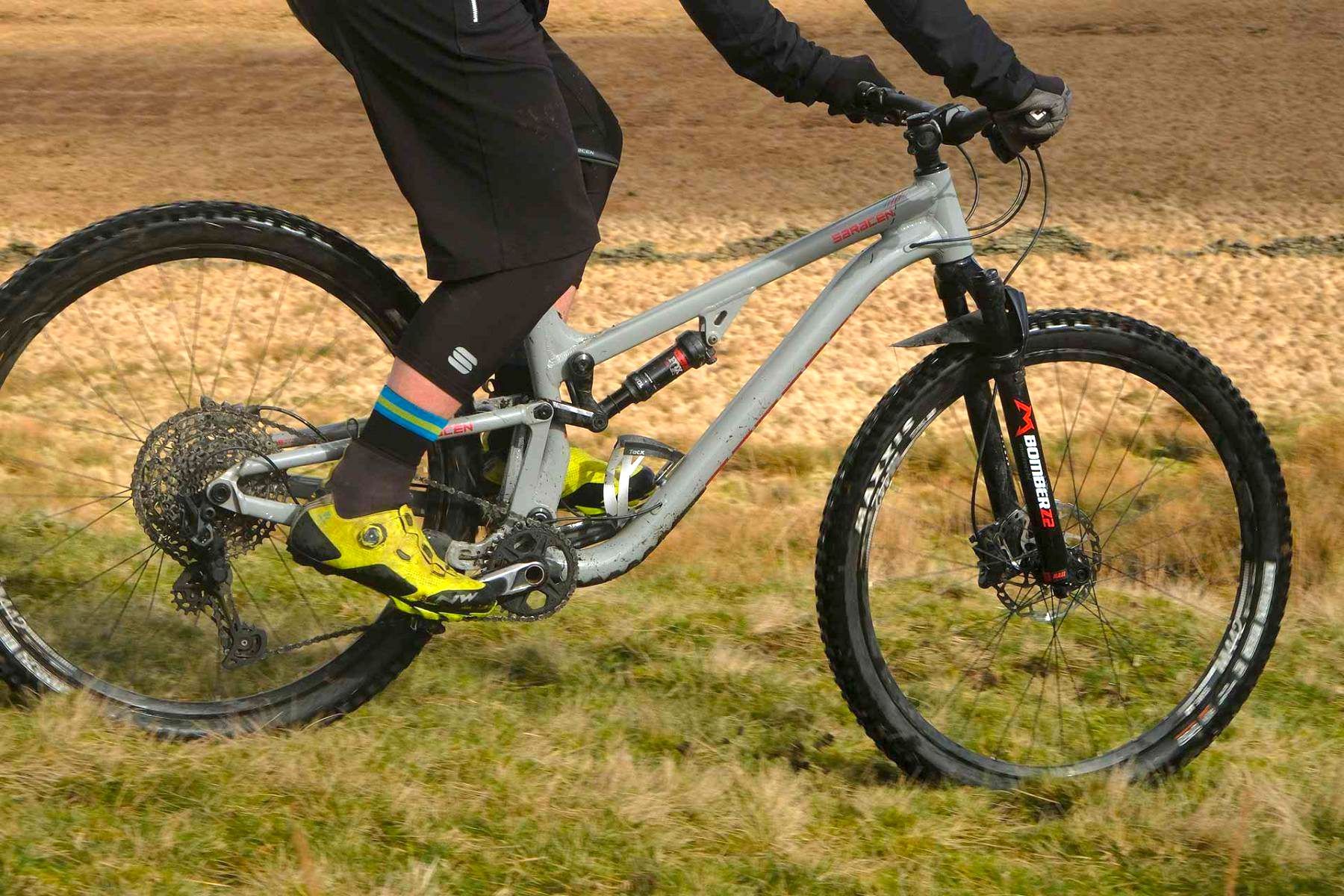
Looking around the frame, it’s neatly welded, with mostly concealed cables and a mid-grey finish that I’ve not managed to harm, despite wearing the paint off the Deore cranks. The main pivot runs on sealed bearings, as do the linkages. It seems that Saracen has learned its lessons from previous bushing tolerance issues in previous models. Other improvements over previous Ariels are things like room for a bottle cage and a very dropped top tube for maximum standover. Riders who up-size a frame will probably wonder why the seatmast is so big as it prevents riders running even longer droppers than the 150mm post supplied. And one other frame niggle – the dropout is held on with a slim, alloy nut that is threadlocked in place. Fine unless it comes loose and then no one in your group is likely to carry an adjustable spanner, but enough disaster projection!
The components on the Ariel fall into the ‘workmanlike’ camp. The Deore chainset looks smart and the 10-51T Deore rear cassette is comically massive. There was occasional grinding and groaning from the transmission over its winter test period and ‘put away wet/frozen into an icicle’ treatment, but it still works reliably, three months on. The 180/180mm Deore brakes are comfortable to use and plenty powerful for most of the terrain a 130mm bike is going to get into. The SLX rear derailleur is a little bit of badge pride on an otherwise full Deore spec (apart from the KMC chain…). KT hubs (on DT Swiss M442 32H rims) are still working smoothly and provide a sonic buzz to keep you company. It’s no bike for the shy unless you never stop pedalling.
Tyre spec is brilliant with Maxxis Minion DHR EXO TR 2.4in tyres front and rear (2.3 on the 27.5in wheeled sizes). I had no problems at all with either traction or punctures, despite a pretty lazy tyre pressure regime…
The Marzocchi Bomber Z2 offers 130mm of travel with simple enough damper adjustment. Really, this is a bike for jumping on and just riding. Despite its slightly complex rear suspension, it’s a single pivot at heart and it was easy to set the rear shock up for rider weight.
The ride
I’ll get this over with first – I have to mention the bike’s weight as I’m from the old Steve Worland school of trail bikes where ‘every pound over 30 counts double’ and the weight of the Ariel 30, at just over 33lbs/15.2kg could definitely be felt. Saying that, though, after that you just got on with riding. To be fair, this is the base spec bike, costing less than many high-end frames on their own, so I’ll quit my whingeing.
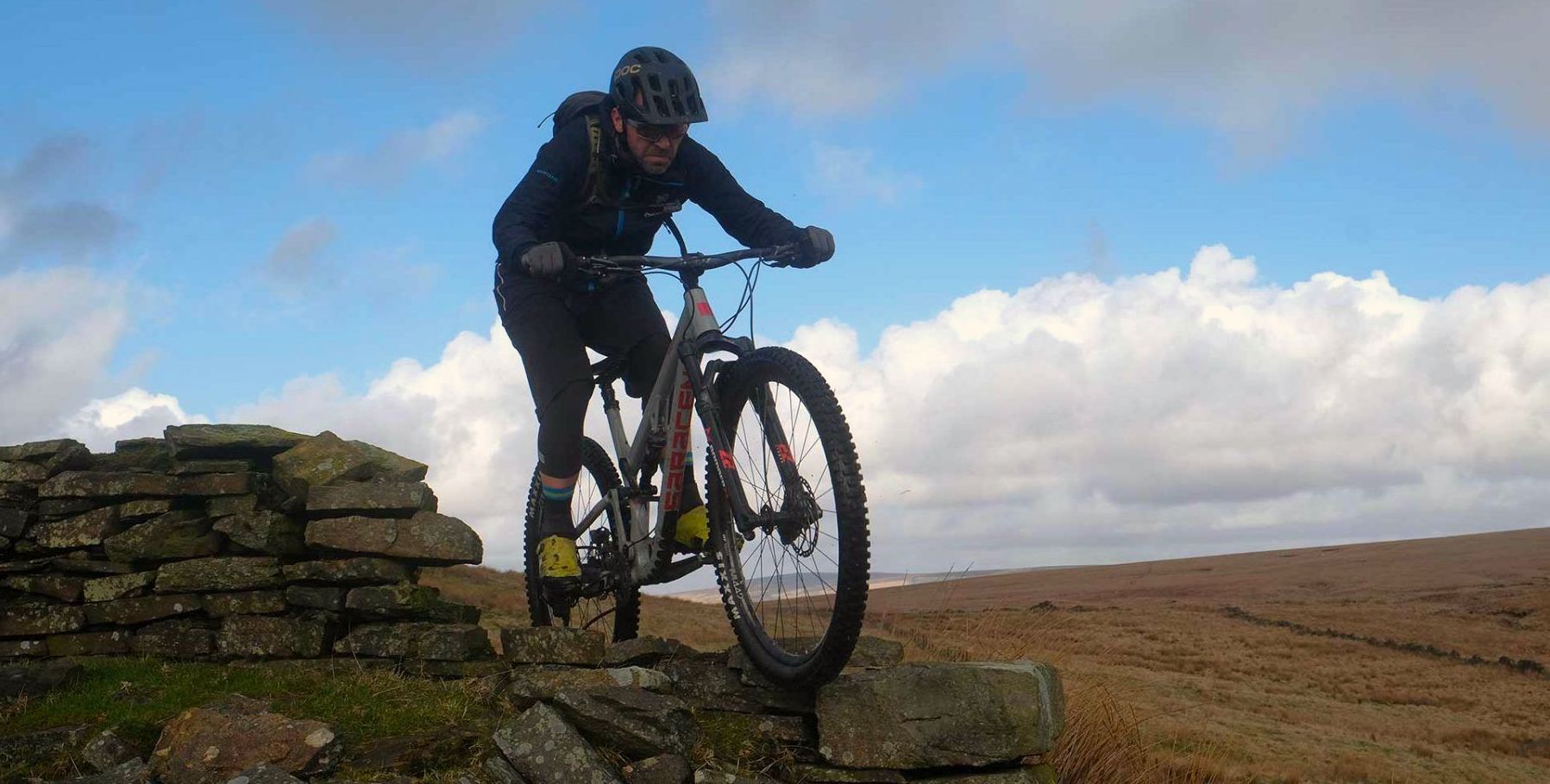
With that out of the way, the Ariel 30 climbed very well. The suspension is supple enough to hug the ground without excessive bob and the weight kept it very planted on both climbs and traverses. The ‘reachy’ riding position was comfortable on seated, technical and smooth climbs alike. The steep seat angle helps put weight on the bars and I didn’t find I had to crank the saddle forward to help that. It actually climbs with very little complaint. The relatively slight 760mm bar width seemed at odds with the 35mm girth of the stem interface, but the bars felt right for every situation around here. Perhaps if I was trying to yank the bike between Innerleithen trees, I might want more leverage, but then, perhaps not.

With the crazy variations of temperatures we had over the test period, I got to see how well the bike stood up to the abuse of regular riding in all weathers and a fair amount of being put away damp (either because the hosepipe was frozen after back to back sub-zero days) or actually frozen into an Ariel-shaped icicle. Apart from a chain that needs a good scrub, it doesn’t look like it’s done hundreds of off road miles, which is exactly what you want for an entry level bike. You can’t afford to respray or upgrade a bike at this level, so it needs to work reliably all the time. I did have some issues with the Marzocchi Bomber Z2 forks, which always felt a little less supple than the rear end (which is easily fixable) but which went into a go-slow once the temperatures got into single figures for several weeks. Perhaps that’s just designing forks in California. It wasn’t enough of a bother to actually do anything about, but just not the ‘supple and bombproof’ reputation that Bombers have always had.
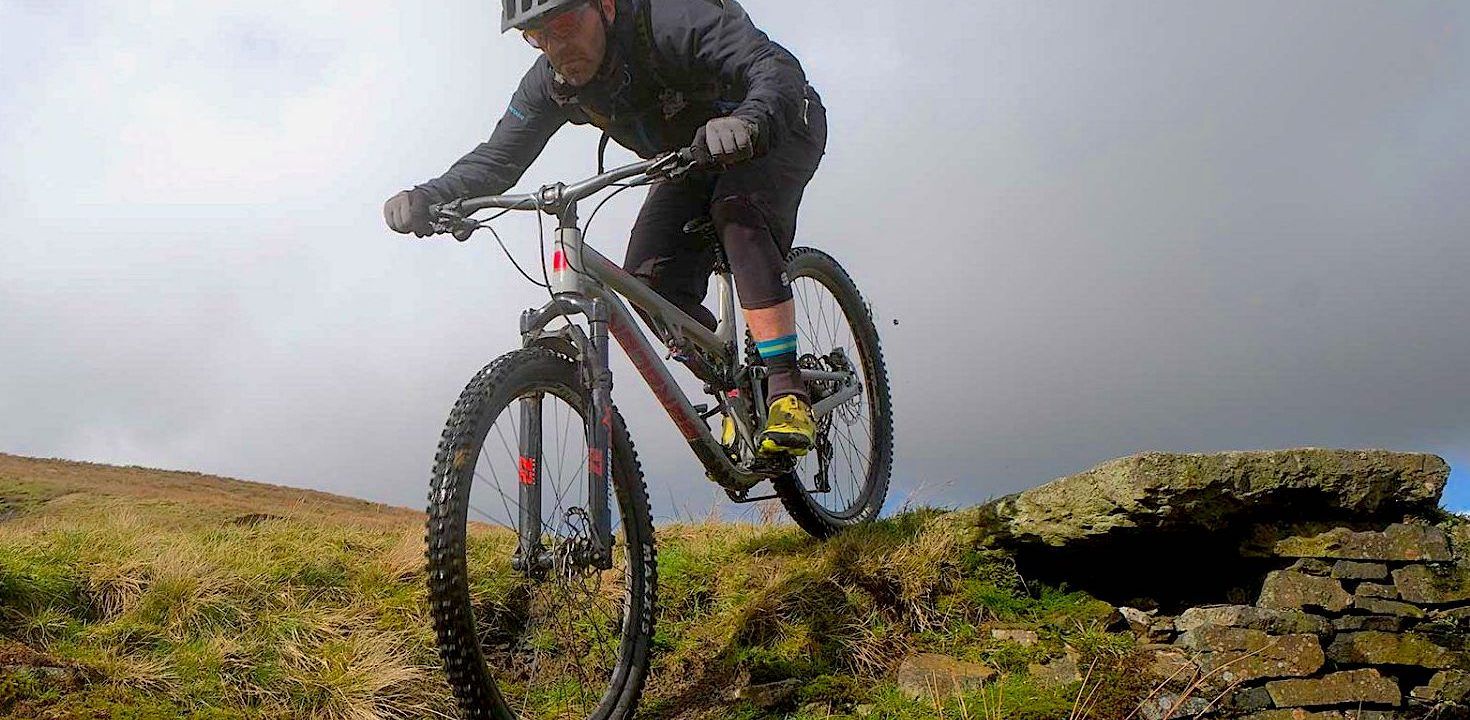
Turning to descents, the Ariel 30 is an absolute blast. Given that it ‘only’ has 130mm of travel and is intended as an all-round trail bike, it’s a beast down hills. It’ll take on any rock gardens and the rear end is a brilliantly supple unit that still manages to be rigid side-to-side. Is this the 157mm Superboost at work? I can’t tell for sure and I’m still so annoyed that none of my old 135/142/148mm wheels will fit that I won’t give it the benefit. What it does do, is provide a ride that is hard to knock off line and that provides a great deal of confidence, especially when your mate Daz takes you down that trail he rode once last year and ‘can’t remember much about it, except that it’s a bit spicy’ – If you’re riding that kind of trail, then you want to be on this bike.
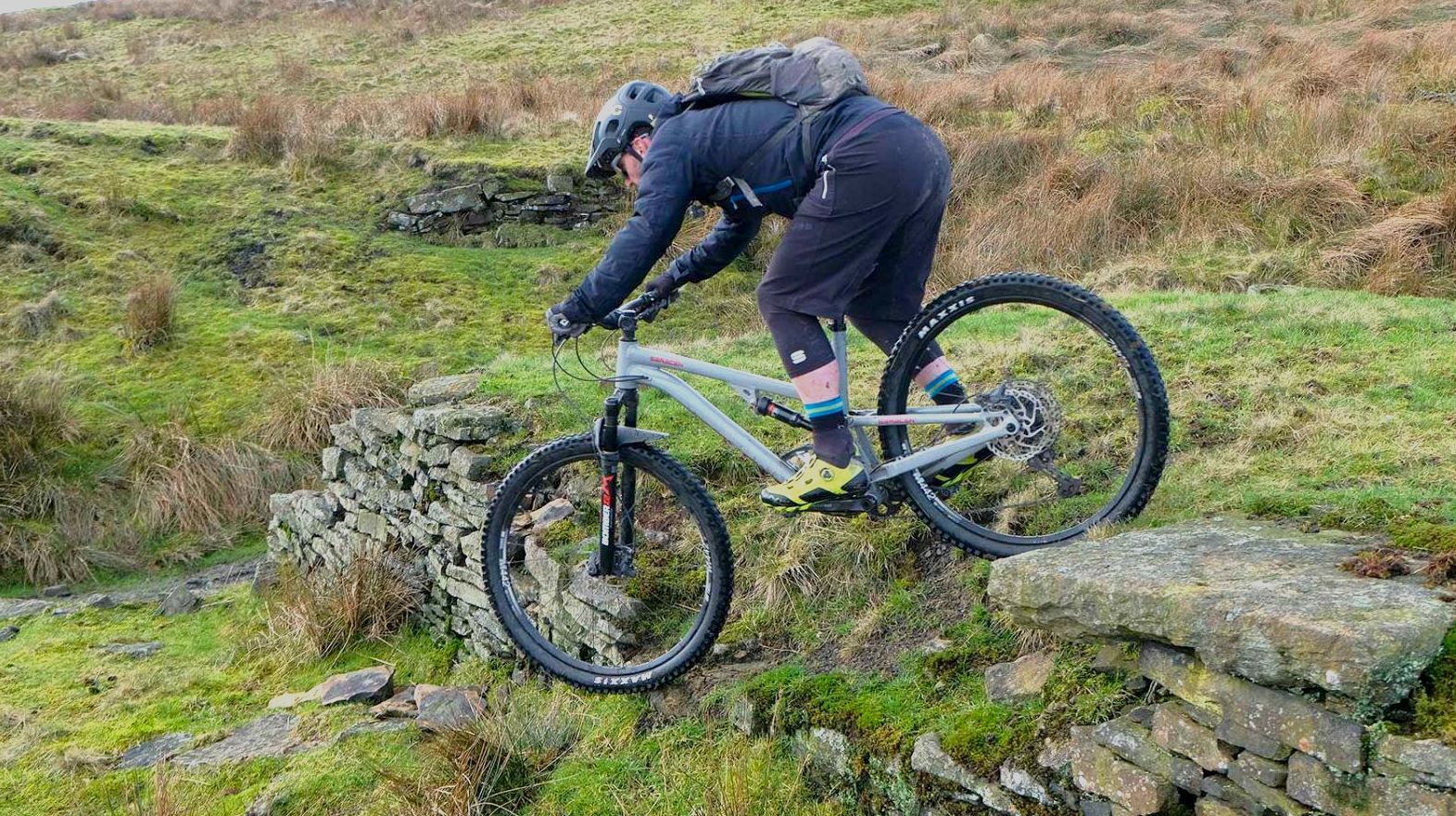
What is very noticeable, though, is that this Baja-truck bump swallowing stability comes at the price of manoeuvrablility. With such a long wheelbase and a rangey reach, it takes some over-exaggerated body English to make the bike do your bidding. While this kind of big-move riding comes naturally to enduro racers and riders of big trail bikes, your average trail bike rider may find themselves not making a few corners or struggling to get the bike up and over obstacles until they really learn to go big on every move – from weighting the fork in turns to making those big power moves to get the bike to shift with the rider and terrain. On the other hand, kudos to Saracen to really pushing production bike geometry.
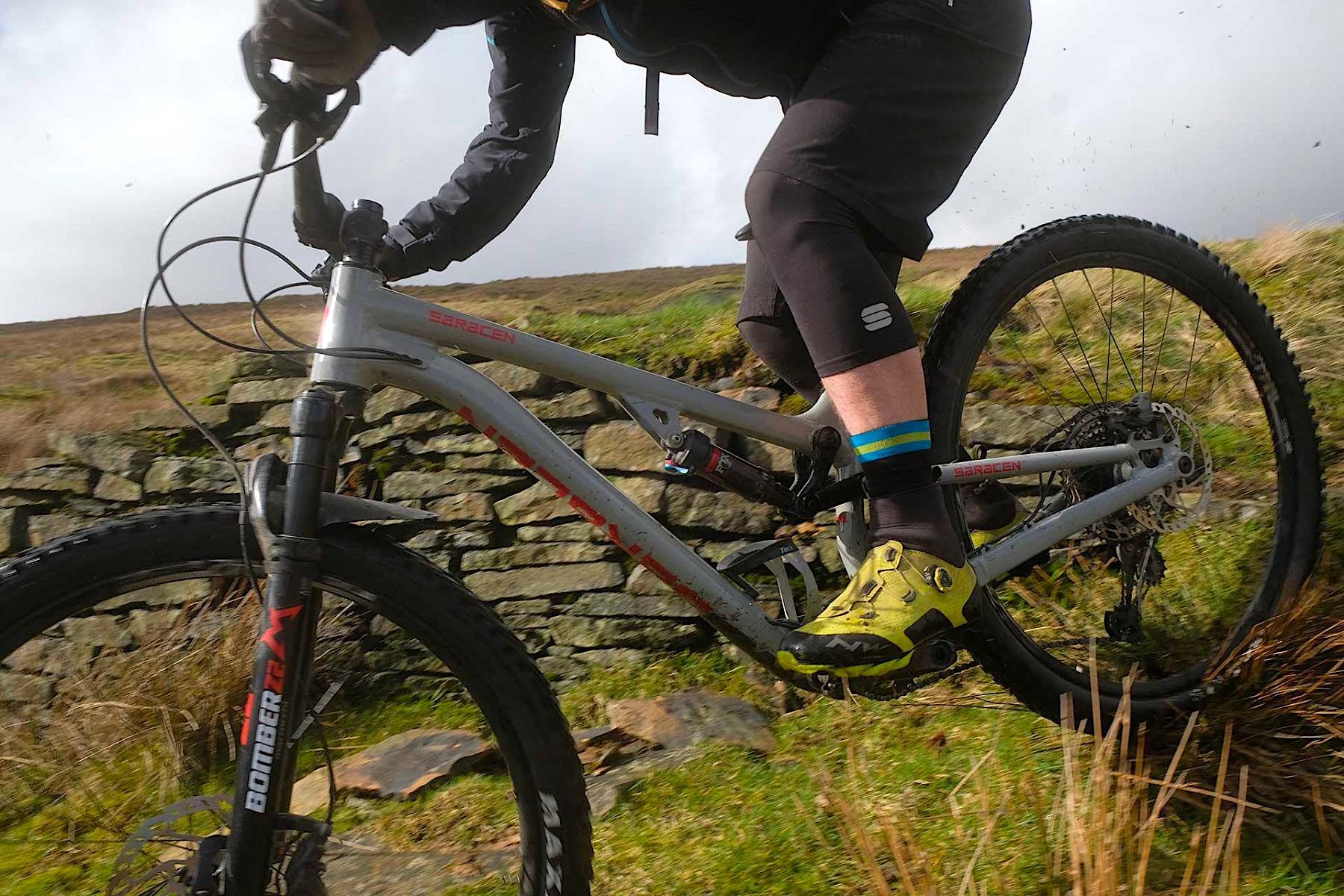
The Saracen Ariel 30, even in this base spec will make a great trail bike for many riders. It has a price that compares well with many of its rivals (and, though you’re getting to the budget where it’s possible to get a carbon frame, or front triangle, they’re rarely any lighter). Hopefully Saracen will have some good demo fleets going round later in the year as the bike needs sizing to the rider’s height, but also style of riding they do. More active, out of the saddle? Size up. Sit and steer more? Stick with a smaller size…
Three things I loved
- The feeling of invincibility on descents – on a 130mm bike!
- The Ariel is a quiet, simple bike that just gets on with things
- The potential to mullet or un-mullet your bike in the future to see if you like it
Three things that could be better
- 35mm bar/stem seems to add girth but stops you running a super short stem. And a 760mm bar will be too narrow for some riders. I’d prefer a 35mm stem and 31.8 x 780mm bars. (The model up has 820mm bars!)
- Easy to knock the shock lever while getting a waterbottle out of its cage
- Why is the seat tube so tall? A shorter mast and longer dropper would please more riders
Overall
This Saracen Ariel 30 has had a hard, no-mercy few months of winter riding. If it was minus 4C, it came out. If it was axle deep bog, it came out. If it was drifting snow, it still came out. The only apparent ‘damage’ from three months of this has been a chain that needs a good scrub and some forks that probably need a proper set up. Not a single puncture or mechanical and a bike that is still a reliable grab if I was heading out the door. For the money, I think it’s brilliant. If you wanted, you could up-sell yourself to the Ariel 30 Pro at £2999 but there’s nothing actually ‘wrong’ with the base Ariel 30. If I didn’t get sent fancy bikes to test all the time, it’s the kind of bike I can see myself buying and really enjoying. (Though I’d probably get a medium…)
- Frame: 6013 Alloy. Wheel Size: 29/29 on L and XL. 29/27.5 on S and M frames. 130mm travel
- Fork: Marzocchi Bomber Z2 130mm
- Headset: Prestine PT-F13
- Stem: RaceFace Aeffect 35x50mm
- Bars: RaceFace Aeffect 760mm
- Grips: ODI Elite Motion
- Seatpost: KS Rage 150mm travel (125mm on Small frames)
- Brakes: Shimano Deore 6100 180/180
- Rear Mech: Shimano SLX 12spd
- Shifter: Shimano Deore 6100
- Cassette: Shimano Deore M6100 10-51T 12spd
- BB: n/a
- Chainset: Shimano Deore FC-M6130 32T 170mm
- Chain: KMC 12spd
- Wheelset: KT Boost/Superboost on DT Swiss M442 32H
- Tyres: Maxxis Minion DHR EXO TR 29 x 2.4
- Price: £2199 (frame with Fox Float DPS £1199)
From: saracen.co.uk
Review Info
| Brand: | Saracen |
| Product: | Ariel 30 |
| From: | saracen.co.uk |
| Price: | £2199 |
| Tested: | by Chipps for Three months |
Comments (11)
Leave Reply
Post Comment
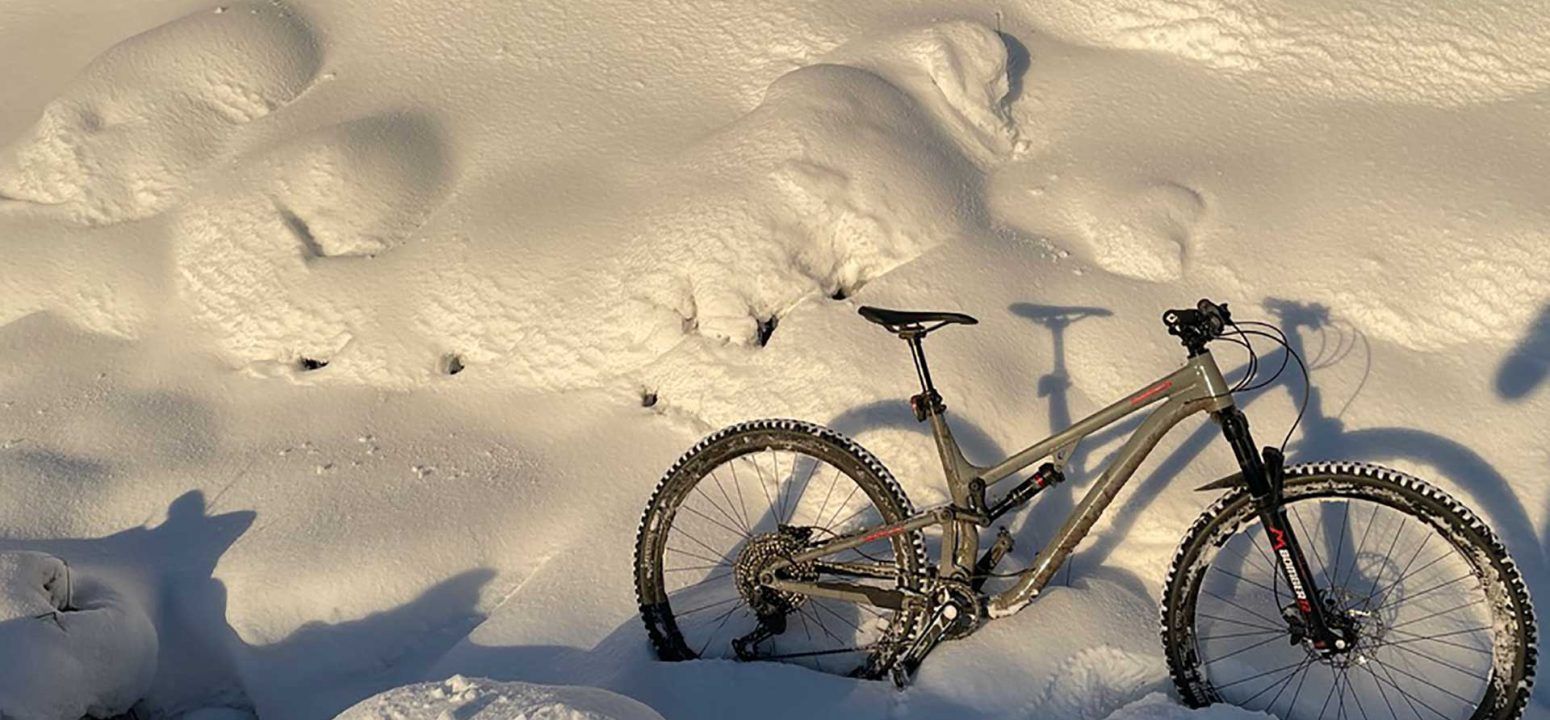
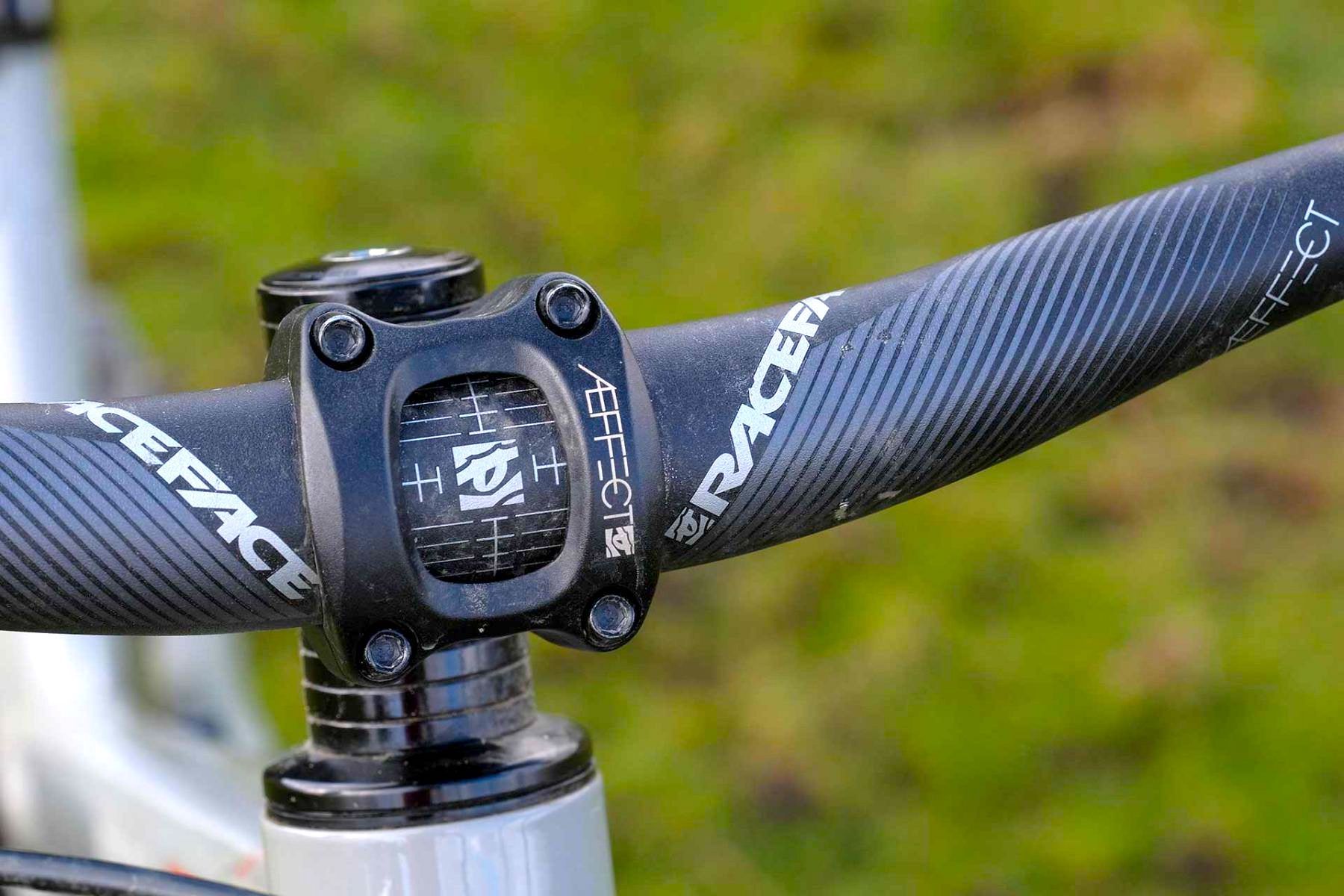

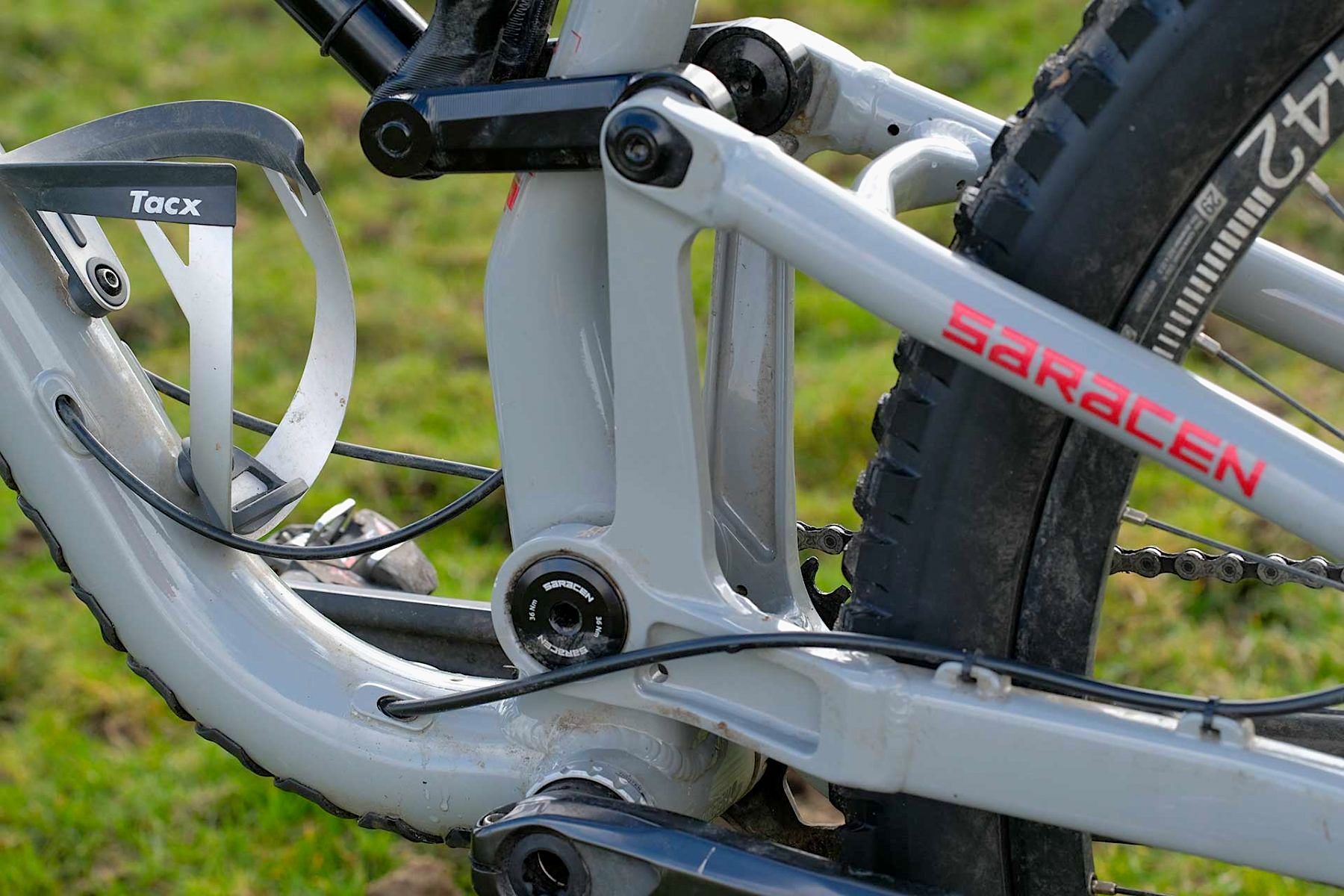

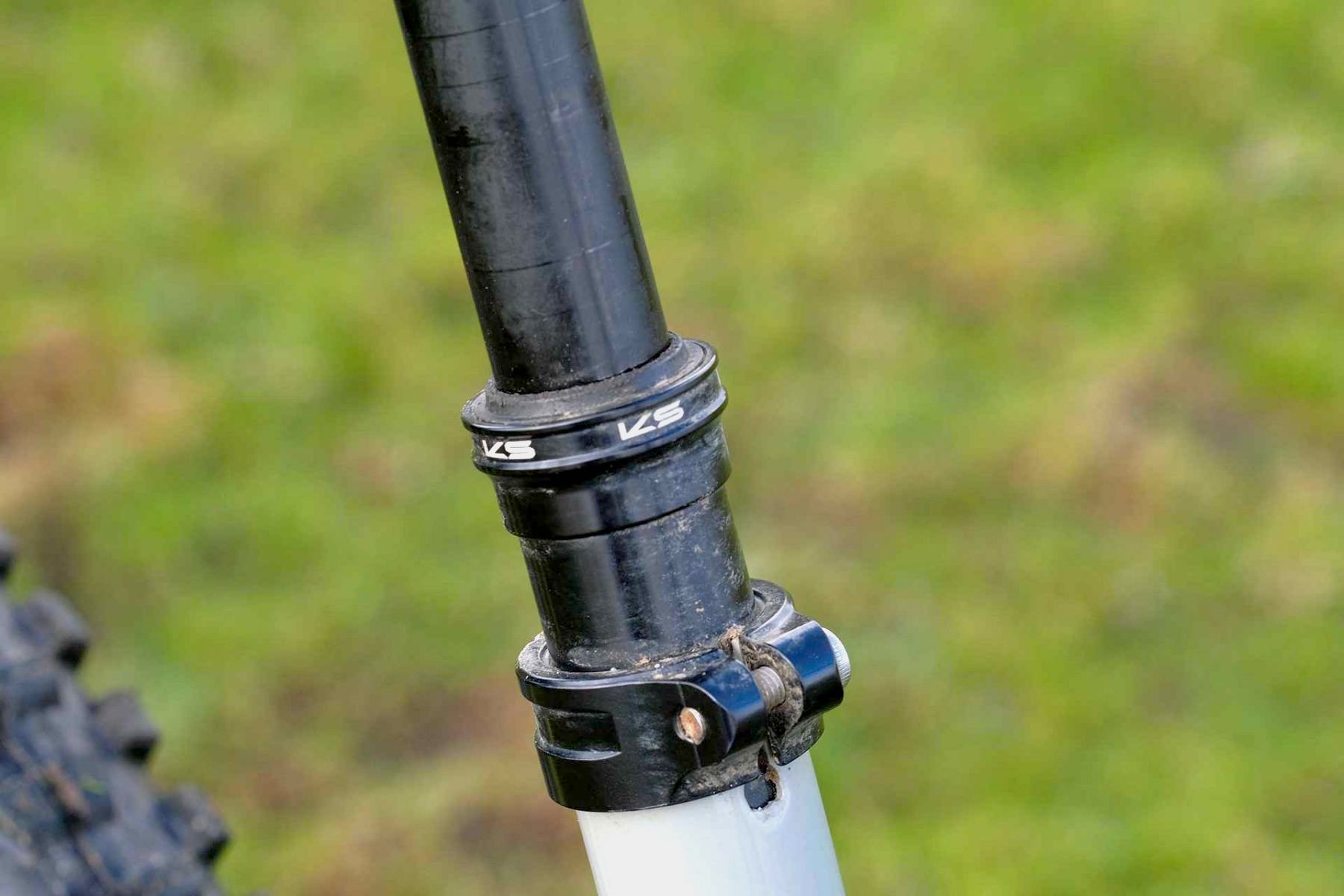
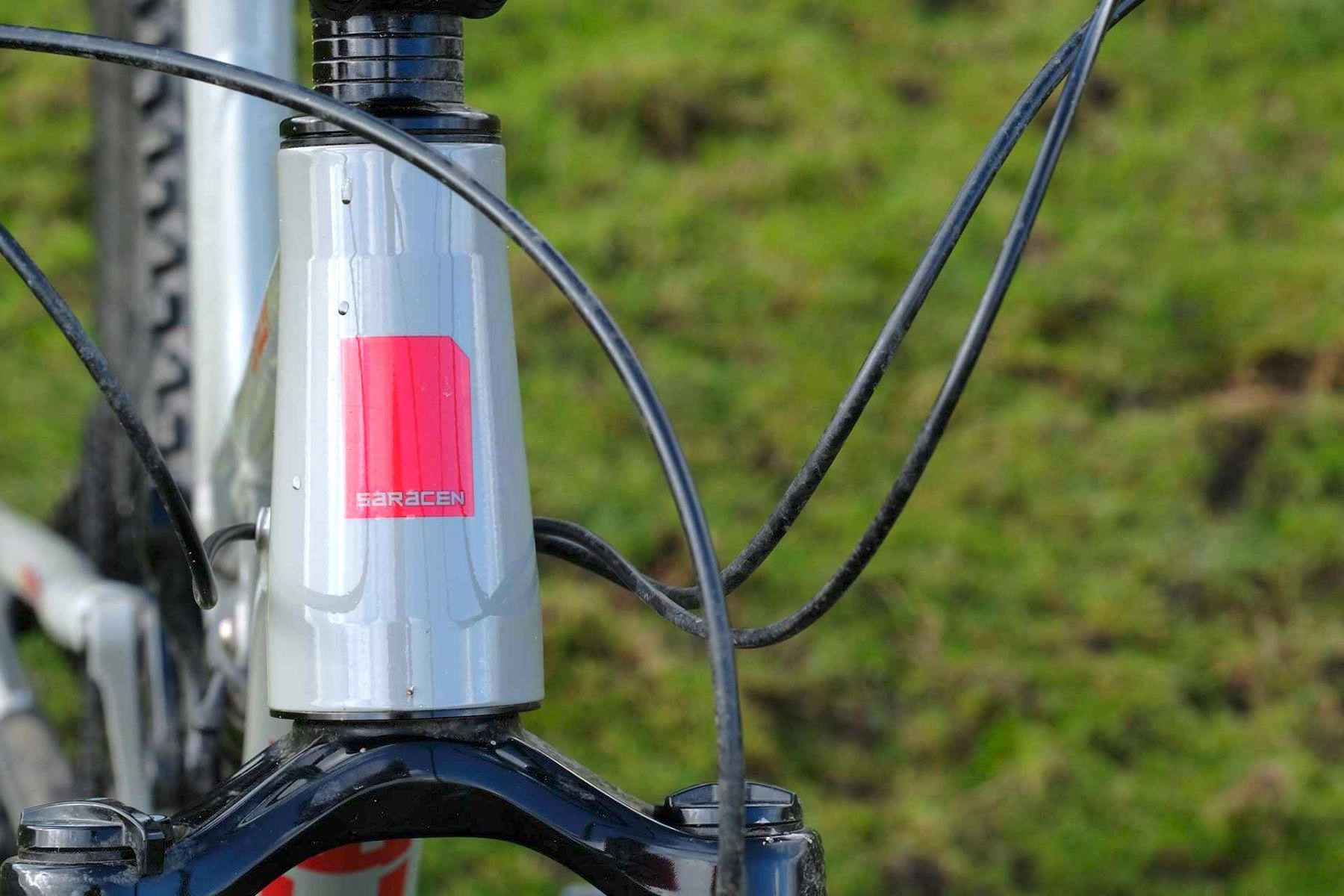
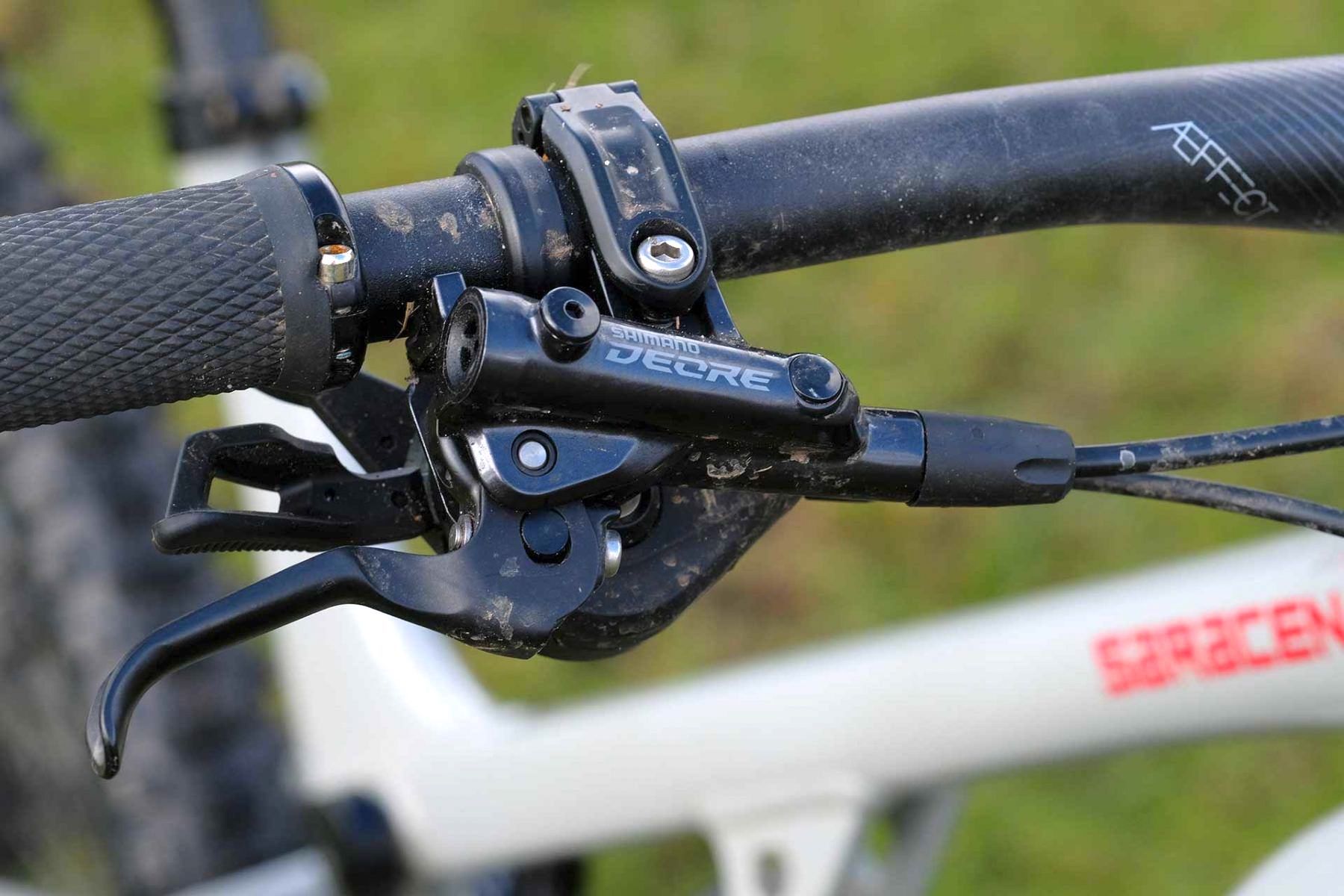
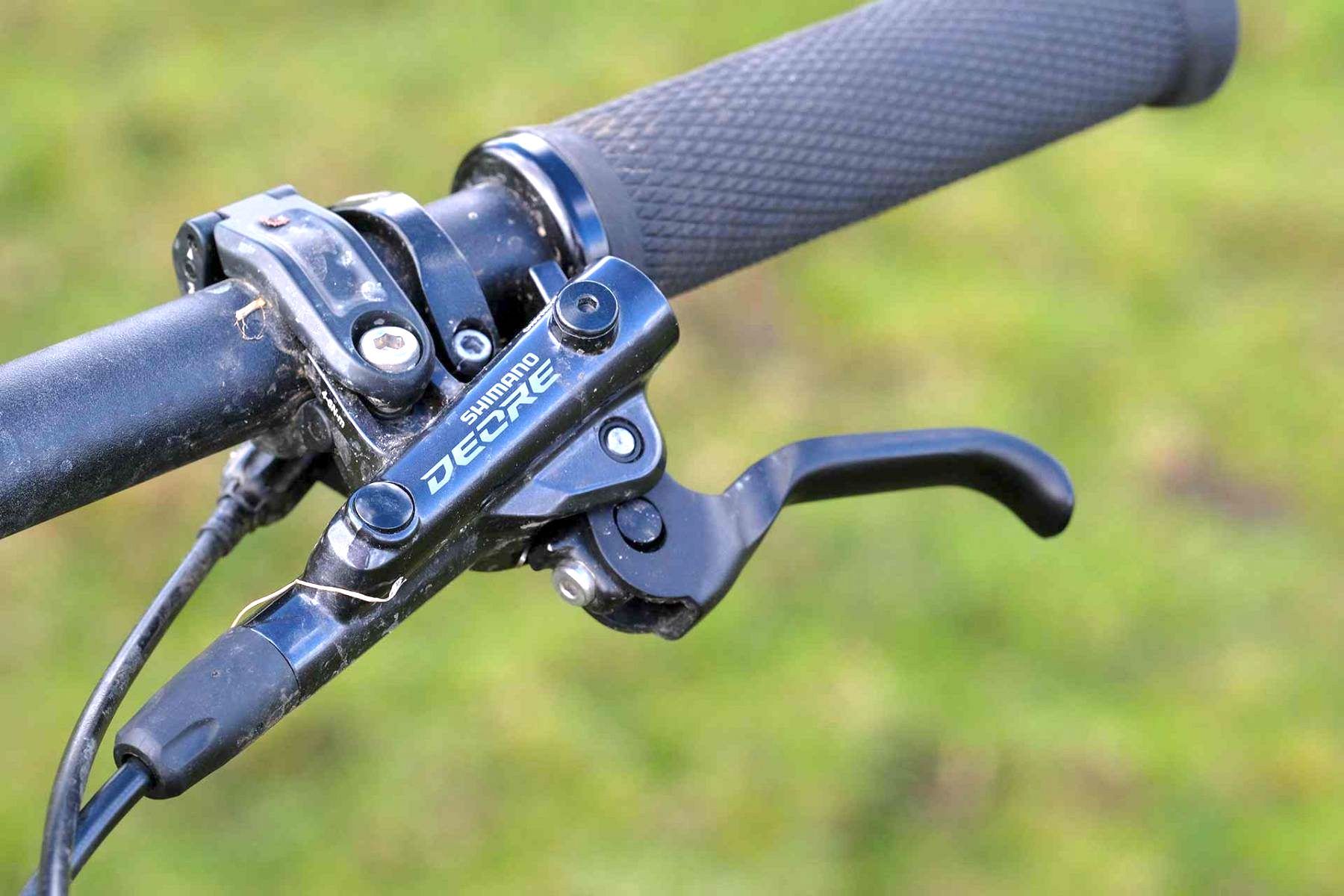
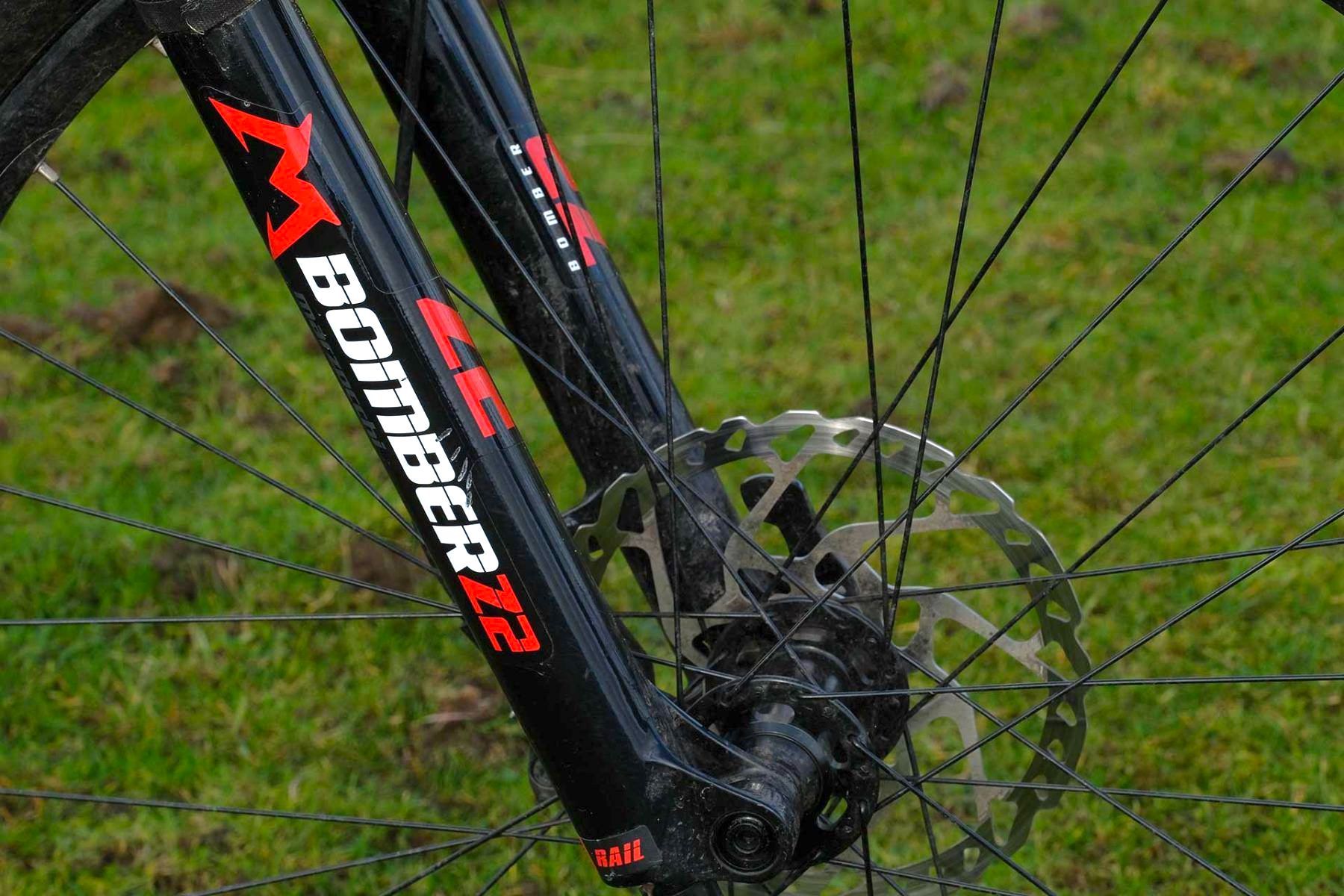
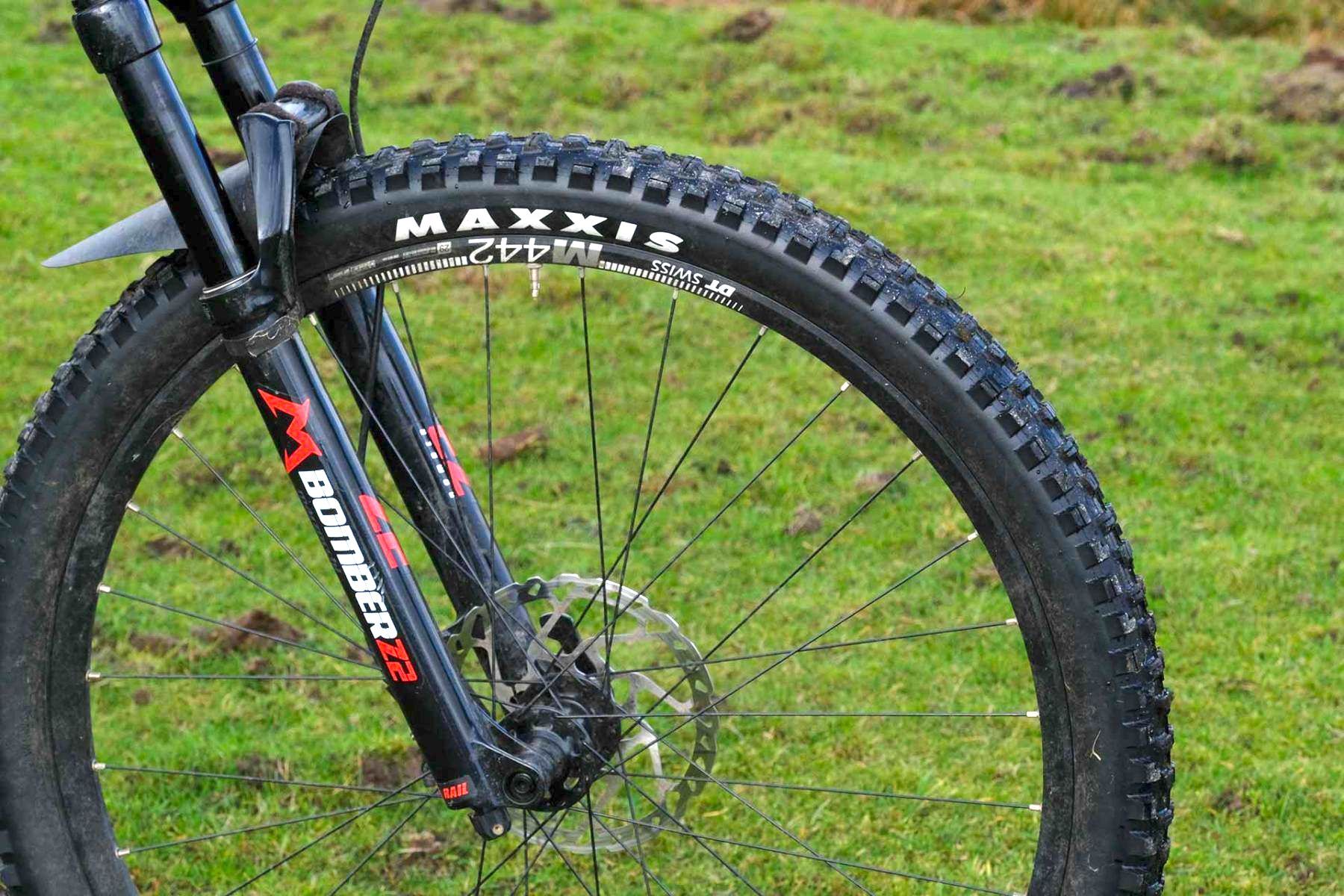
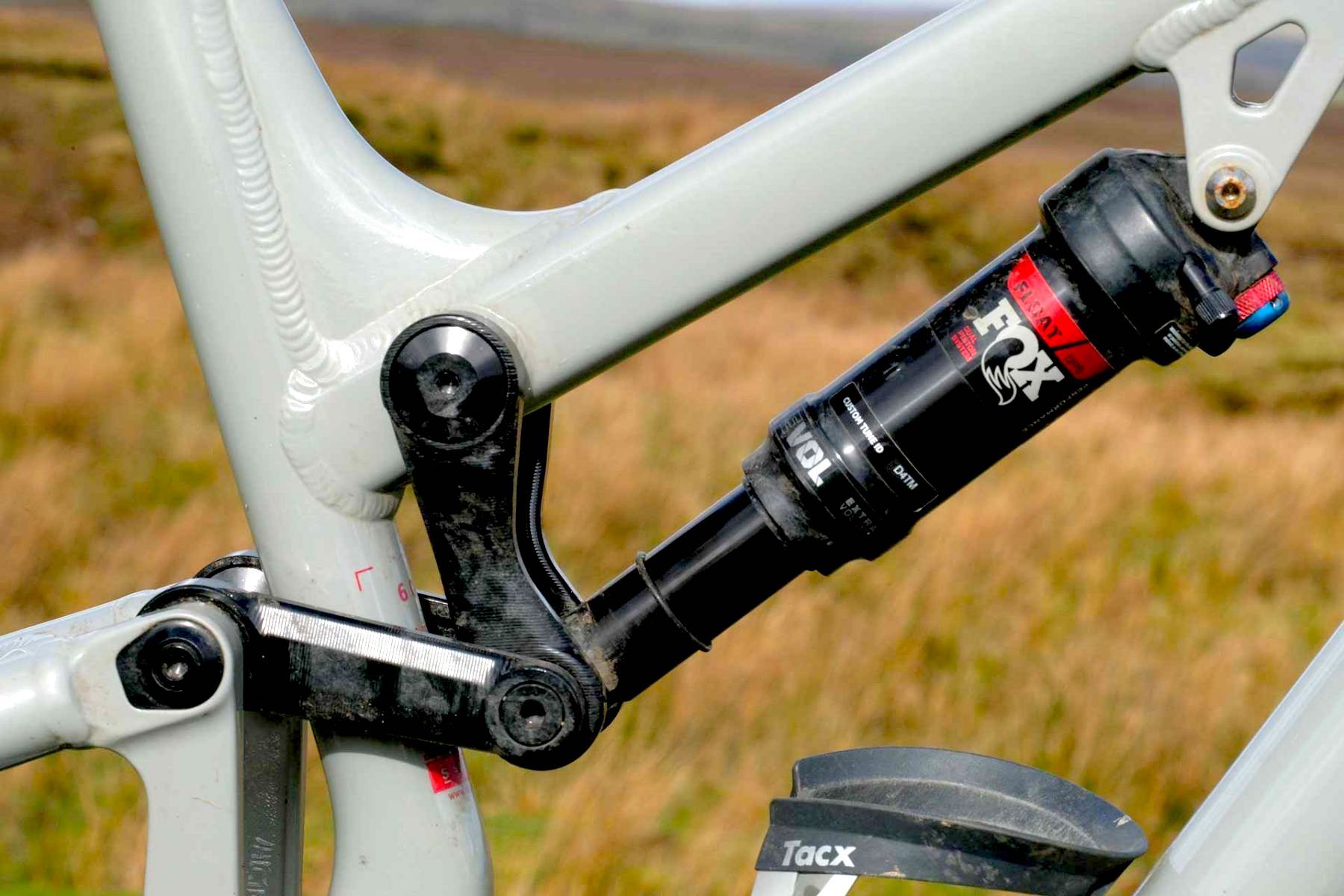

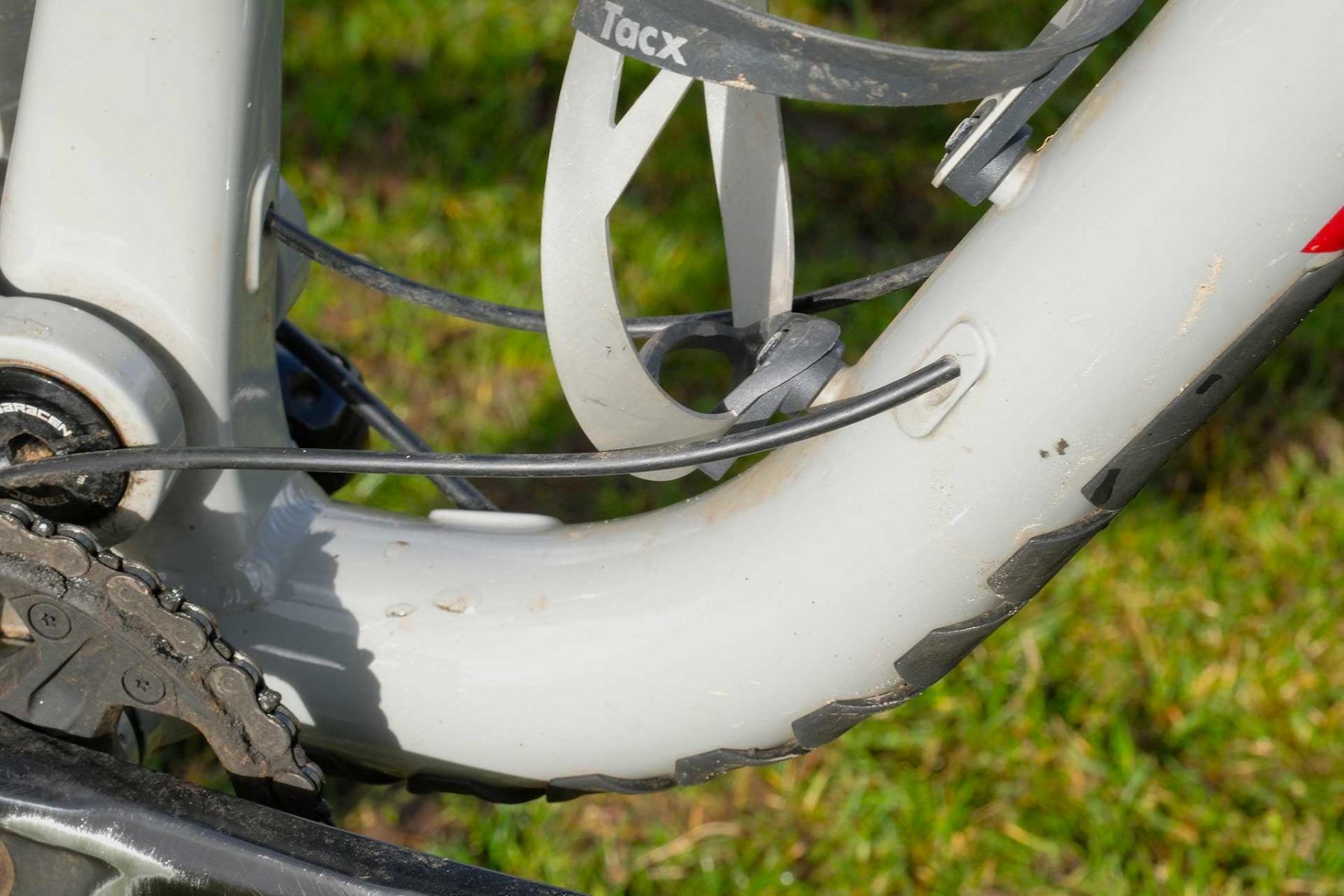
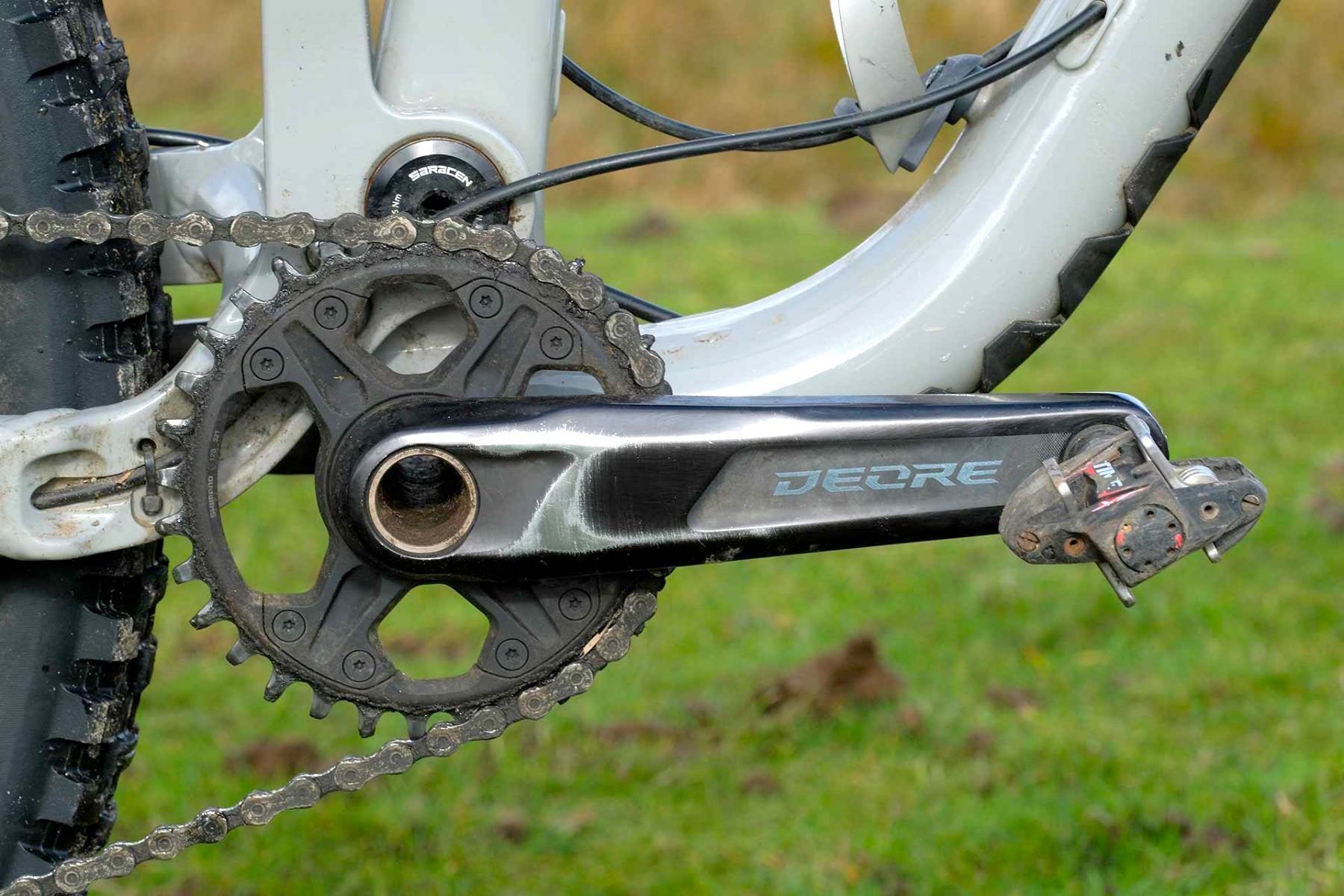
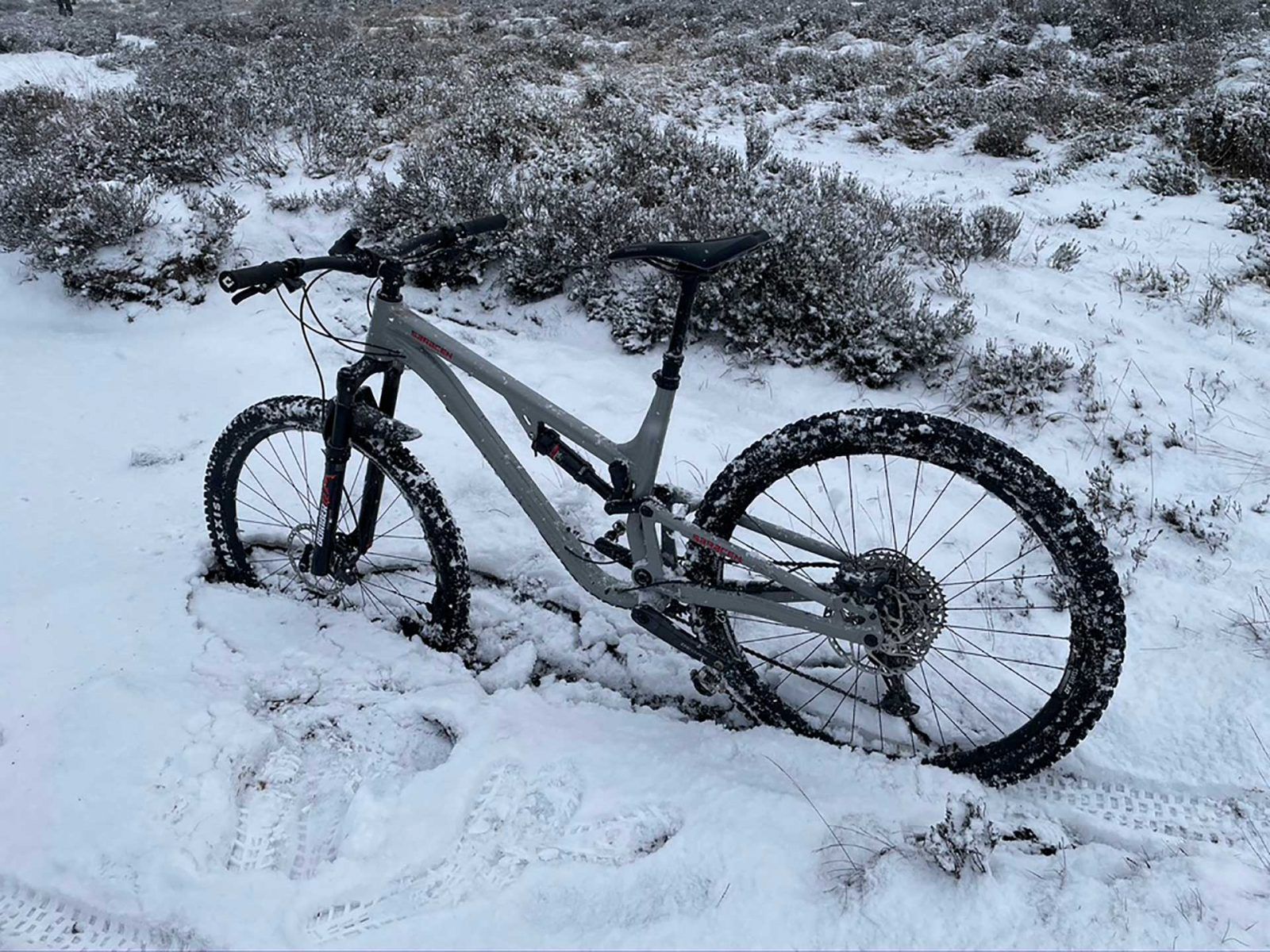

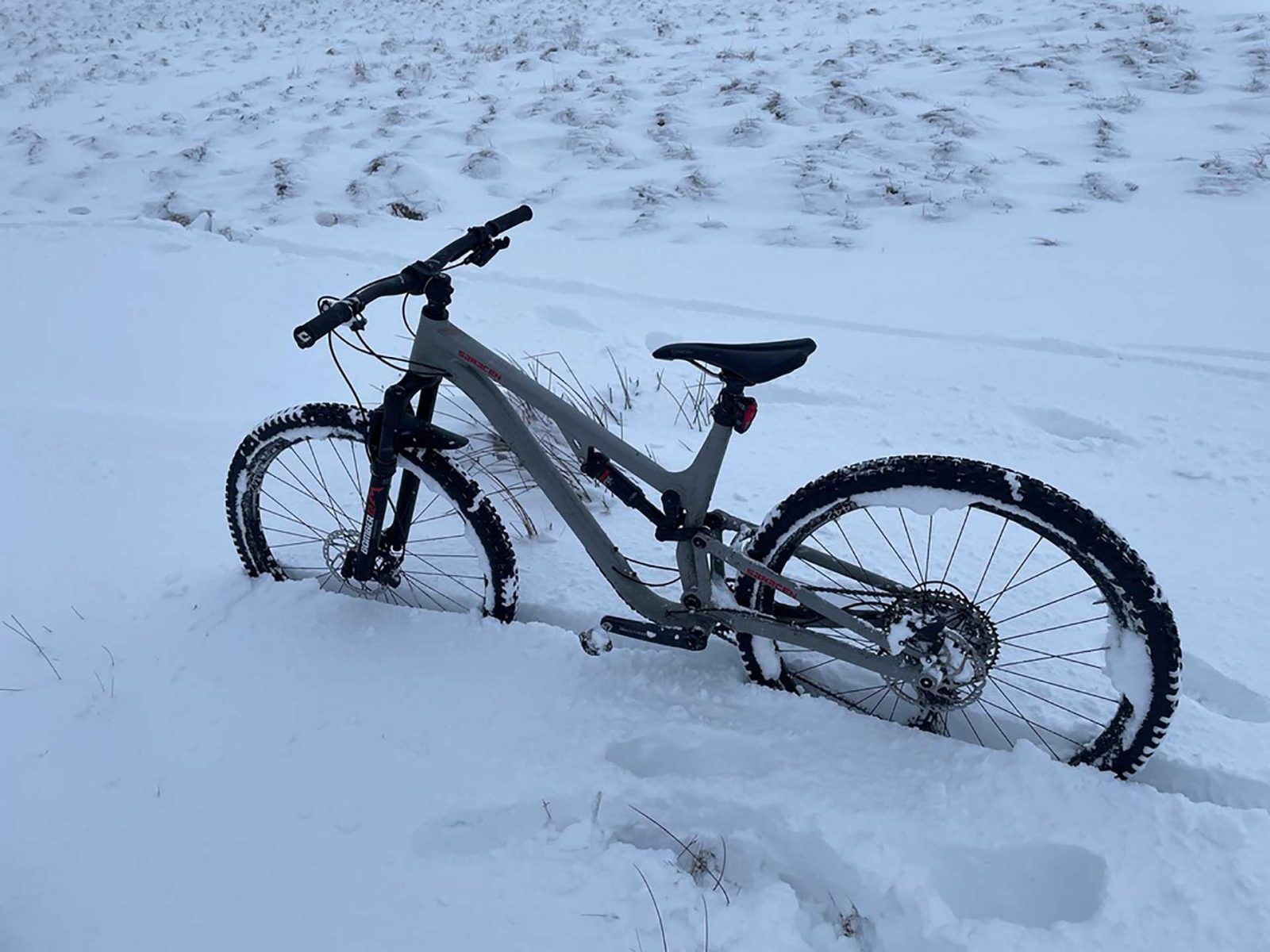

The progression of trail geometry leaves me thinking that, as a forty something rider living in the South east, xc race bikes are going to become the go-to option. Whilst my 2018 trail bike is great on lumper terrain and trail ctr stuff, it can be slow going on my local single track.
Is it me or does the linkage look ‘odd’ in the way it folds on itself? I am sure it works fine (as review says) it just looks like a very ‘falling rate’ kind of affair.
My eyes…. those boots…
The weight is too much with no real options for losing it cheaply either, usually there are OEM bars and stems to ditch but not here. Plus the reach on a medium is just too long! I’m a medium frame size in every manufacturer, always have been and I know from my current bikes that a reach of between 430 and 460 is ideal. 480mm is just too far and dropping down to the small just means the dropper post is too short. Add in the mullet wheels and it’s really close to being a good option but just doesn’t tick enough boxes for me.
Oh and the weight (again): my steel, 160mm Rocket with heavy tyres, beefy wheels, boat anchor crankset (860g!) and heavier suspension is only 1lb heavier than this is. That’s just too much.
So good to see a full sus bike in alloy instead of flavour of the month carbon and at a really sensible price too. While it is great to get to ride the latest and lightest full sus machines, when it comes to actually spending my own money, bikes like this Saracen are far more likely to get me to put my hand in my pocket. Heck, I am still riding a 2011 Turner Sultan 29er!
@reluctantjumper Your frame costs approx the same as this complete bike. You’d save very little by swapping out cheap OEM bars and stem – 100g maybe? Potential to lose weight on cranks and cassette if weight is a concern here.
There’s some really odd spec choices here – upgraded rear mech as though it’s 2005 even though there’s nothing wrong with Deore, and they’d be better off with a Shimano chain instead. Crazy long reach but a long stem too and 35mm diameter bars that could be too narrow for some. And the superboost back end. A 3C MaxxTerra front tyre would be better too.
Great to see a U.K. brand getting a
Budget bouncer out there.. does remind me of the DMR sled but nowt wrong with that.. defo put a shorter stem on it though..
Madison brand, who are shimano agent, who say shimano chain should be used with drive train for optimum performance, then supply a KMC chain? Odd?
@tomB Despite Madison being the Shimano importer, that unfortunately/surprisingly doesn’t affect its OEM status. Saracen has to line up with the rest of the world’s bike companies for components. Being relatively small, it sits a fair way down that line. We’ve seen KMC chains on other bikes with ‘full’ Shimano groups, so it’s obviously an accepted spec – and probably saves money off the bike’s price.
If you want a decent performing bike on a budget, the single best thing you can do is stop worrying about the weight.